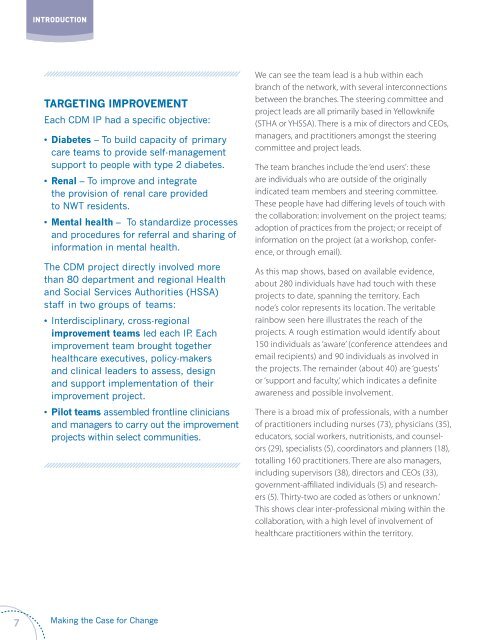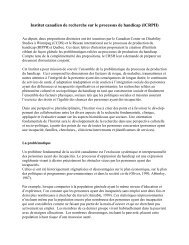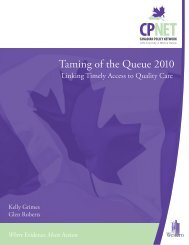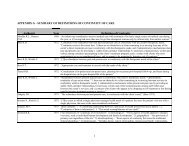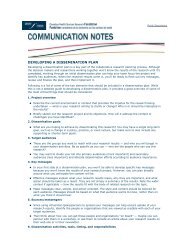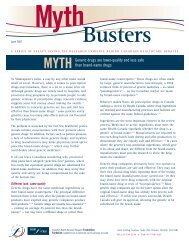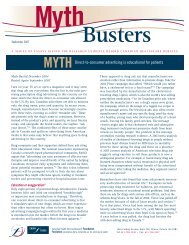Full Report
Full Report
Full Report
Create successful ePaper yourself
Turn your PDF publications into a flip-book with our unique Google optimized e-Paper software.
INTRODUCTION<br />
Targeting improvement<br />
Each CDM IP had a specific objective:<br />
• Diabetes – To build capacity of primary<br />
care teams to provide self-management<br />
support to people with type 2 diabetes.<br />
• Renal – To improve and integrate<br />
the provision of renal care provided<br />
to NWT residents.<br />
• Mental health – To standardize processes<br />
and procedures for referral and sharing of<br />
information in mental health.<br />
The CDM project directly involved more<br />
than 80 department and regional Health<br />
and Social Services Authorities (HSSA)<br />
staff in two groups of teams:<br />
• Interdisciplinary, cross-regional<br />
improvement teams led each IP. Each<br />
improvement team brought together<br />
healthcare executives, policy-makers<br />
and clinical leaders to assess, design<br />
and support implementation of their<br />
improvement project.<br />
• Pilot teams assembled frontline clinicians<br />
and managers to carry out the improvement<br />
projects within select communities.<br />
We can see the team lead is a hub within each<br />
branch of the network, with several interconnections<br />
between the branches. The steering committee and<br />
project leads are all primarily based in Yellowknife<br />
(STHA or YHSSA). There is a mix of directors and CEOs,<br />
managers, and practitioners amongst the steering<br />
committee and project leads.<br />
The team branches include the ‘end users’: these<br />
are individuals who are outside of the originally<br />
indicated team members and steering committee.<br />
These people have had differing levels of touch with<br />
the collaboration: involvement on the project teams;<br />
adoption of practices from the project; or receipt of<br />
information on the project (at a workshop, conference,<br />
or through email).<br />
As this map shows, based on available evidence,<br />
about 280 individuals have had touch with these<br />
projects to date, spanning the territory. Each<br />
node’s color represents its location. The veritable<br />
rainbow seen here illustrates the reach of the<br />
projects. A rough estimation would identify about<br />
150 individuals as ‘aware’ (conference attendees and<br />
email recipients) and 90 individuals as involved in<br />
the projects. The remainder (about 40) are ‘guests’<br />
or ‘support and faculty,’ which indicates a definite<br />
awareness and possible involvement.<br />
There is a broad mix of professionals, with a number<br />
of practitioners including nurses (73), physicians (35),<br />
educators, social workers, nutritionists, and counselors<br />
(29), specialists (5), coordinators and planners (18),<br />
totalling 160 practitioners. There are also managers,<br />
including supervisors (38), directors and CEOs (33),<br />
government-affiliated individuals (5) and researchers<br />
(5). Thirty-two are coded as ‘others or unknown.’<br />
This shows clear inter-professional mixing within the<br />
collaboration, with a high level of involvement of<br />
healthcare practitioners within the territory.<br />
7<br />
Making the Case for Change


